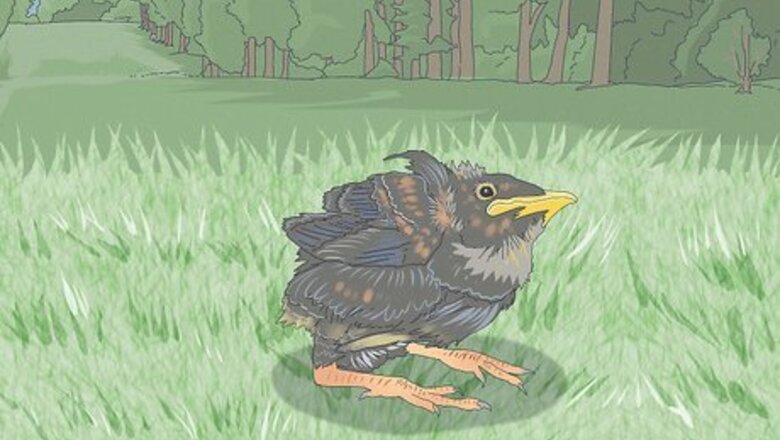
views
- Leave a fallen fledgling alone if they’re uninjured and you see the parent birds perched or flying nearby.
- Carefully move a fledgling onto a low branch or into a bush if there are cats, dogs, or people nearby.
- Call a local wildlife rehabilitator if the fledgling has visible injuries or if the parents don’t return within an hour.
Monitoring a Fledgling Bird
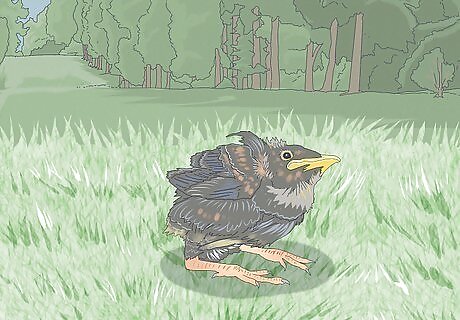
Confirm if the bird is a hatchling, nestling, or fledgling. Slowly approach the bird and carefully inspect their features. It’s easy to identify hatchlings and nestlings since they have no visible feathers on their wings or body. Fledglings, on the other hand, have short tails and are covered with feathers. Hatchlings and nestlings can’t survive outside of the nest, but fledglings are normally safe if you find them on the ground. To help a fallen hatchling, check for their nest and look for the parents perched or flying nearby. If you find the nest and see the parent birds, gently pick up the baby and place them back in the nest. If you don’t see the nest, then contact a local wildlife rehabilitator.
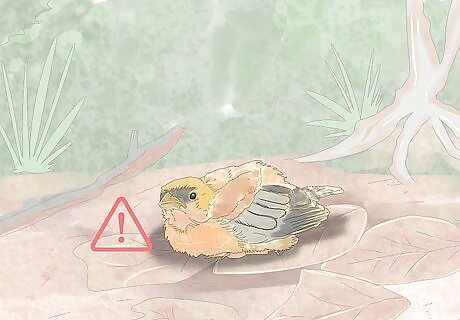
Leave an unharmed fledgling on the ground as they learn to fly. As long as the parents are observing and frequently feeding the young fledgling, they're being taken care of and don’t need your help. Fledglings spend as long as 1–2 weeks on the ground as they learn to fly, so it’s perfectly normal to see them hopping around. It might look like a fledgling is in trouble, but they’re just learning! The best thing you can do is leave the healthy fledgling alone. If you’re concerned about the fledgling’s health and safety, peek out every 1–2 days to make sure that they're still hopping around and that the parents check on them occasionally.

Avoid putting a fledgling in a nearby nest. Even if you see a nest in a nearby tree, the fledgling doesn’t need to go back into it. The young bird will just jump back out of the nest and go back to the ground. Some parent birds may even push the fledgling back out a second time! The nest you found may not even belong to the fledgling’s family or may have been constructed by a different species, so it’s best to just leave the bird alone.
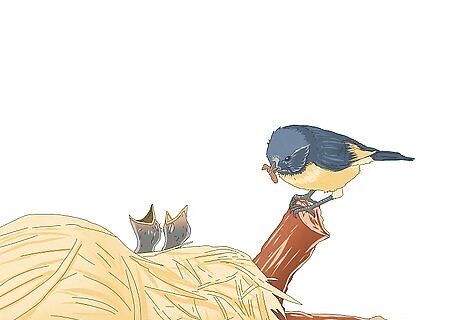
Let the fledgling’s parents feed them. Although the young bird may appear small and hungry, resist the temptation to care for them and give them food. Their parents are likely nearby and will bring food over to them from time to time. Similarly, do not try to give the bird water—they can find it on their own! Avoid picking up the fledgling bird and carrying them to a source of water since they could easily be lost or eaten by a predator. If a young bird accepts food from humans too many times, they may imprint on humans and struggle to form social bonds with other birds. There’s also a chance that you feed the fledgling improperly and harm them.
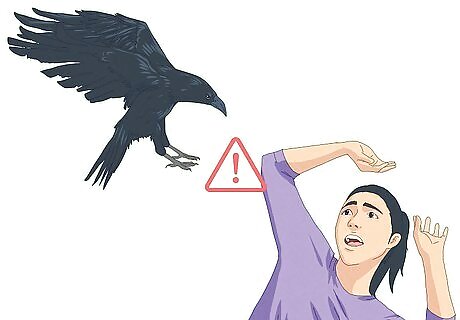
Protect yourself from overzealous parent birds. As fledglings hop on the ground and learn to fly, their parents are often nearby observing them. Some species of birds, like crows, are very protective of their young, so they may swoop down and attack if they think you’re threatening their fledglings. If 1 or 2 grown birds swoop down at you, just avert your eyes and move away quickly. Try to avoid the area with the fledgling until they learn to fly away. If you can’t avoid the area with the fledgling, carry an umbrella with you to keep the parent birds away from your head and face.
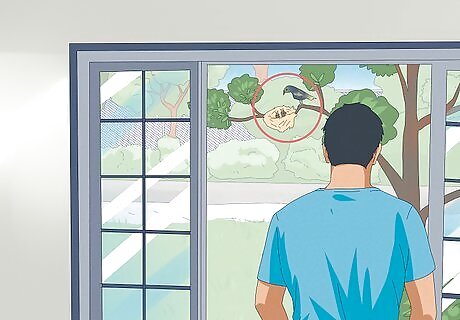
Check that the fledgling’s parents are feeding them regularly. Find a spot that’s preferably indoors or about 20–30 feet (6.1–9.1 m) away from the fledgling and watch the nearby treetops. Usually within the hour, one of their parents should swoop down with some food to check on the young fledgling. If you see the parent birds go down to the fledgling, then it’s safe to leave alone. If the parents are not approaching the fledgling, try moving a little further away. The adult birds may not fly down if you’re too close. If you still don’t see the parent birds, call a local wildlife rehabilitator since the fledgling may be abandoned.
Helping an Injured Bird
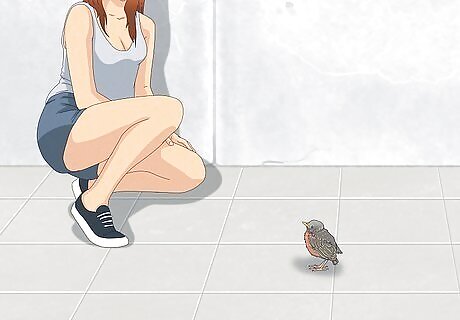
Inspect the fledgling for injuries. Slowly approach the fledgling until you’re less than 3 feet (0.91 m) away. Crouch down and look closely at the young bird for any signs of injury. A drooping wing, visible broken bones, or any blood are all signs that the fledgling is hurt. However, if the bird holds their wings against their sides and doesn’t show signs of pain, then they’re probably not injured. A seriously injured fledgling may have flies or other bugs near their body.
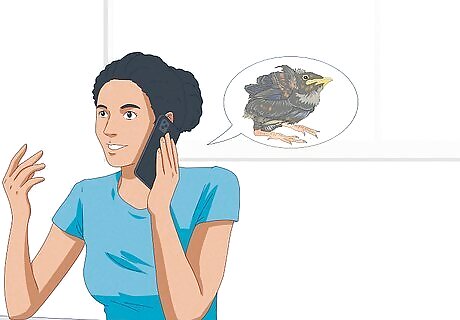
Call a wildlife rehabilitator to care for an injured fledgling. Wildlife rehabilitators are trained professionals who know how to care for orphaned or hurt fledglings. Check your local government’s wildlife department website to find rehabilitators in your area. Reach out to one of the local rehabilitators as soon as possible so the bird gets treatment quickly. They will come inspect the fledgling and take the bird to a wildlife care center if they need more care. Each state has a different list of licensed wildlife rehabilitators. Avoid taking care of a fledgling on your own since it’s against the law to keep wild animals in most areas.
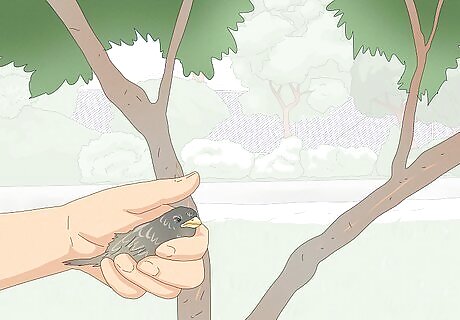
Place a fledgling on a low tree branch if it’s in immediate danger. If the fledgling is in a populated area or if there’s a predator nearby, it’s okay to move the bird. Put on a pair of gloves so the baby bird doesn’t peck or scratch you. Gently slide your hand beneath the fledgling. Lift the bird up and place them onto a low tree branch or inside of a nearby bush so it’s hidden. If the fledgling is injured, make sure you still call a wildlife rehabilitator after you’ve placed the fledgling into a tree or bush. You may have heard that parent birds will abandon babies after someone handles them, but it’s not true. Most birds have a poor sense of smell and won’t even know you picked up their young.
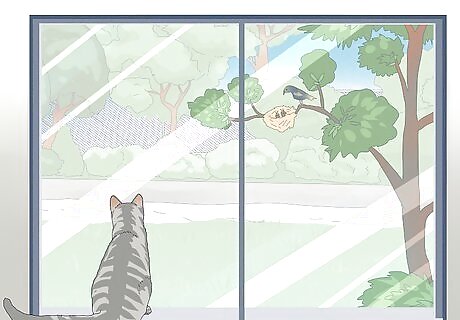
Keep cats and other pets indoors until the fledgling moves off. Domesticated animals can be dangerous to fledglings that are unable to fly, especially cats since birds are their natural prey. If the fledgling is within ⁄4 mile (0.40 km) of your home, keep all your pets indoors for up to 2 weeks or until you see the fledgling has flown off. If you have neighbors with cats, advise them to keep their pets indoors for the same amount of time as well.



















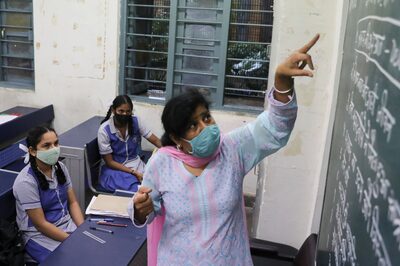
Comments
0 comment